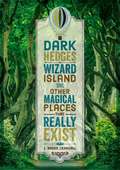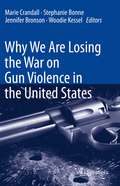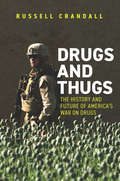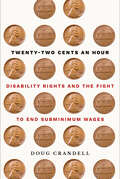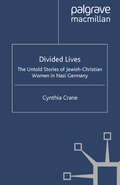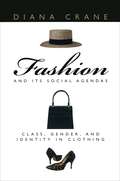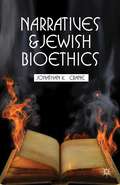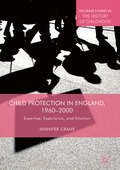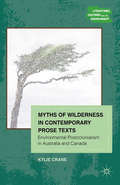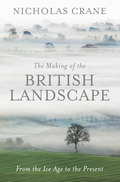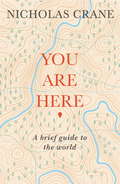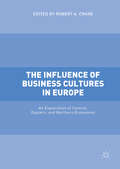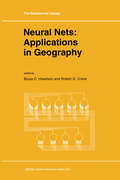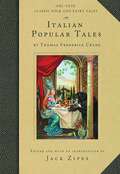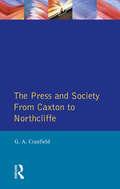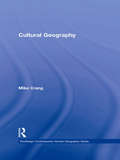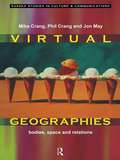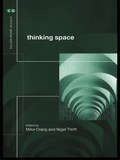- Table View
- List View
Dark Hedges, Wizard Island, and Other Magical Places That Really Exist
by L Rader CrandallFrom a lost city in the desert to a cave alight with thousands of glowworms, learn about some of the most unusual places on earth and the myths, legends, and history behind each of them!Looking at places like The Skeleton Coast in Namibia, Wizard Island in the United States, and The Fairy Tale Route in Germany, The Dark Hedges and Other Magical Places that Really Exist takes young readers on a journey around the world to real places that sound straight out of fantasy. Featuring both natural and man-made wonders, this travel book combines history and storytelling to explore the far reaches of the earth.
Why We Are Losing the War on Gun Violence in the United States
by Marie Crandall Stephanie Bonne Jennifer Bronson Woodie KesselThis edited collection of data and perspectives takes a fresh approach to gun violence prevention by addressing the question, “why are we losing the war on gun violence in America?” Although successes and failures in the prevention of gun violence are examined, it is a war we are losing, due to restrictions on research funding, entrenched historical perspectives, structural violence, and perhaps differing priorities or views on what is right or wrong.Gun violence is a public health crisis. It remains politicized and has been paralyzed with inaction. In the chapters, the authors write candidly about the challenges that have thwarted gun violence prevention, as well as highlight possible strategies for progress to save lives. Critical areas explored among the chapters include:Gun Violence, Structural Violence, and Social JusticeSchool Shootings: Creating Safer SchoolsMental Illness and Gun ViolenceUnderstanding the Political Divide in Gun Policy SupportThe Second Amendment and the War on GunsThe Impact of Policy and Law Enforcement Strategies on Reducing Gun Violence in AmericaYouth Gun Violence Prevention OrganizingSmart Guns Don't Kill PeopleWith this compendium, the editors and authors hope to bridge the growing gap between groups or ideologies, and create common ground to discuss workable solutions. Why We Are Losing the War on Gun Violence in the United States is essential reading for a broad audience including practitioners, academics, researchers, students, policy-makers, and other professionals in public health, behavioral sciences (including social work and psychology), social sciences, health sciences, public policy, political science, and law, as well as any readers interested in the path to decreasing gun violence in America.
Drugs and Thugs: The History and Future of America's War on Drugs
by Russell CrandallA sweeping and highly readable work on the evolution of America’s domestic and global drug war How can the United States chart a path forward in the war on drugs? In Drugs and Thugs, Russell Crandall uncovers the full history of this war that has lasted more than a century. As a scholar and a high-level national security advisor to both the George W. Bush and Obama administrations, he provides an essential view of the economic, political, and human impacts of U.S. drug policies. Backed by extensive research, lucid and unbiased analysis of policy, and his own personal experiences, Crandall takes readers from Afghanistan to Colombia, to Peru and Mexico, to Miami International Airport and the border crossing between El Paso and Juarez to trace the complex social networks that make up the drug trade and drug consumption. Through historically driven stories, Crandall reveals how the war on drugs has evolved to address mass incarceration, the opioid epidemic, the legalization and medical use of marijuana, and America’s shifting foreign policy.
Twenty-Two Cents an Hour: Disability Rights and the Fight to End Subminimum Wages
by Doug CrandellIn Twenty-Two Cents an Hour, Doug Crandell uncovers the harsh reality of people with disabilities in the United States who are forced to work in unethical conditions for subminimum wages with little or no opportunity to advocate for themselves, while wealthy CEOs grow even wealthier as a direct result. As recently as 2016, the United States Congress enacted bipartisan legislation which continued to allow workers with disabilities to legally be paid far lower than the federal minimum wage. Drawing on ongoing federal Department of Justice lawsuits, the horrifying story of Henry's Turkey Farm in Iowa, and more, Crandell shows the history of the policies that have led to these unjust outcomes, examines who benefits from this legislation, and asks important questions about the rise of a disability industrial complex. Exposing this complex—which is rooted in profit, lobbying, and playing on the emotions of workers' parents and families, as well as the public—Crandell challenges readers to reexamine how we treat some of our most vulnerable fellow citizens. Twenty-Two Cents an Hour forces the reader to face the reality of this exploitation, and builds the framework needed for reform.
Divided Lives: The Untold Stories of Jewish-Christian Women in Nazi Germany
by Cynthia CraneThis book brings together the horrifying real life stories of women who woke up one day and were not who they thought they were. The government changed and they suddenly no longer had the right kind of blood, the right name, the right family background, the right physical features to be considered a member of society, city, or state. These stories are from German women who were a part of a Jewish-Christian "mixed marriage" and were subsequently persecuted under the Nuremberg laws. Hitler called them "mischling"- half-breeds, however, they have often been passed over in studies of the Holocaust - perhaps because they are often not considered "real Jews." But these women are still struggling with the nightmares of the Third Reich and the Holocaust, the loss of family in concentration camps, and with their own identity-divided between their Jewish and Christian roots. Often their Jewish background was revealed to them only after Hitler's laws were passed. These are the narratives of eight women who remained in Germany, struggling to reclaim their German heritage and their cultural and religious identity. The narratives are compelling and sensitively written, addressing questions of cultural and ethnic identity.
Fashion and Its Social Agendas: Class, Gender, and Identity in Clothing
by Diana CraneIt has long been said that clothes make the man (or woman), but is it still true today? If so, how has the information clothes convey changed over the years? Using a wide range of historical and contemporary materials, Diana Crane demonstrates how the social significance of clothing has been transformed. Crane compares nineteenth-century societies—France and the United States—where social class was the most salient aspect of social identity signified in clothing with late twentieth-century America, where lifestyle, gender, sexual orientation, age, and ethnicity are more meaningful to individuals in constructing their wardrobes. Today, clothes worn at work signify social class, but leisure clothes convey meanings ranging from trite to political. In today's multicode societies, clothes inhibit as well as facilitate communication between highly fragmented social groups. Crane extends her comparison by showing how nineteenth-century French designers created fashions that suited lifestyles of Paris elites but that were also widely adopted outside France. By contrast, today's designers operate in a global marketplace, shaped by television, film, and popular music. No longer confined to elites, trendsetters are drawn from many social groups, and most trends have short trajectories. To assess the impact of fashion on women, Crane uses voices of college-aged and middle-aged women who took part in focus groups. These discussions yield fascinating information about women's perceptions of female identity and sexuality in the fashion industry. An absorbing work, Fashion and Its Social Agendas stands out as a critical study of gender, fashion, and consumer culture. "Why do people dress the way they do? How does clothing contribute to a person's identity as a man or woman, as a white-collar professional or blue-collar worker, as a preppie, yuppie, or nerd? How is it that dress no longer denotes social class so much as lifestyle? . . . Intelligent and informative, [this] book proposes thoughtful answers to some of these questions."-Library Journal
Fashion and Its Social Agendas: Class, Gender, and Identity in Clothing
by Diana CraneIt has long been said that clothes make the man (or woman), but is it still true today? If so, how has the information clothes convey changed over the years? Using a wide range of historical and contemporary materials, Diana Crane demonstrates how the social significance of clothing has been transformed. Crane compares nineteenth-century societies—France and the United States—where social class was the most salient aspect of social identity signified in clothing with late twentieth-century America, where lifestyle, gender, sexual orientation, age, and ethnicity are more meaningful to individuals in constructing their wardrobes. Today, clothes worn at work signify social class, but leisure clothes convey meanings ranging from trite to political. In today's multicode societies, clothes inhibit as well as facilitate communication between highly fragmented social groups. Crane extends her comparison by showing how nineteenth-century French designers created fashions that suited lifestyles of Paris elites but that were also widely adopted outside France. By contrast, today's designers operate in a global marketplace, shaped by television, film, and popular music. No longer confined to elites, trendsetters are drawn from many social groups, and most trends have short trajectories. To assess the impact of fashion on women, Crane uses voices of college-aged and middle-aged women who took part in focus groups. These discussions yield fascinating information about women's perceptions of female identity and sexuality in the fashion industry. An absorbing work, Fashion and Its Social Agendas stands out as a critical study of gender, fashion, and consumer culture. "Why do people dress the way they do? How does clothing contribute to a person's identity as a man or woman, as a white-collar professional or blue-collar worker, as a preppie, yuppie, or nerd? How is it that dress no longer denotes social class so much as lifestyle? . . . Intelligent and informative, [this] book proposes thoughtful answers to some of these questions."-Library Journal
Fashion and Its Social Agendas: Class, Gender, and Identity in Clothing
by Diana CraneIt has long been said that clothes make the man (or woman), but is it still true today? If so, how has the information clothes convey changed over the years? Using a wide range of historical and contemporary materials, Diana Crane demonstrates how the social significance of clothing has been transformed. Crane compares nineteenth-century societies—France and the United States—where social class was the most salient aspect of social identity signified in clothing with late twentieth-century America, where lifestyle, gender, sexual orientation, age, and ethnicity are more meaningful to individuals in constructing their wardrobes. Today, clothes worn at work signify social class, but leisure clothes convey meanings ranging from trite to political. In today's multicode societies, clothes inhibit as well as facilitate communication between highly fragmented social groups. Crane extends her comparison by showing how nineteenth-century French designers created fashions that suited lifestyles of Paris elites but that were also widely adopted outside France. By contrast, today's designers operate in a global marketplace, shaped by television, film, and popular music. No longer confined to elites, trendsetters are drawn from many social groups, and most trends have short trajectories. To assess the impact of fashion on women, Crane uses voices of college-aged and middle-aged women who took part in focus groups. These discussions yield fascinating information about women's perceptions of female identity and sexuality in the fashion industry. An absorbing work, Fashion and Its Social Agendas stands out as a critical study of gender, fashion, and consumer culture. "Why do people dress the way they do? How does clothing contribute to a person's identity as a man or woman, as a white-collar professional or blue-collar worker, as a preppie, yuppie, or nerd? How is it that dress no longer denotes social class so much as lifestyle? . . . Intelligent and informative, [this] book proposes thoughtful answers to some of these questions."-Library Journal
Fashion and Its Social Agendas: Class, Gender, and Identity in Clothing
by Diana CraneIt has long been said that clothes make the man (or woman), but is it still true today? If so, how has the information clothes convey changed over the years? Using a wide range of historical and contemporary materials, Diana Crane demonstrates how the social significance of clothing has been transformed. Crane compares nineteenth-century societies—France and the United States—where social class was the most salient aspect of social identity signified in clothing with late twentieth-century America, where lifestyle, gender, sexual orientation, age, and ethnicity are more meaningful to individuals in constructing their wardrobes. Today, clothes worn at work signify social class, but leisure clothes convey meanings ranging from trite to political. In today's multicode societies, clothes inhibit as well as facilitate communication between highly fragmented social groups. Crane extends her comparison by showing how nineteenth-century French designers created fashions that suited lifestyles of Paris elites but that were also widely adopted outside France. By contrast, today's designers operate in a global marketplace, shaped by television, film, and popular music. No longer confined to elites, trendsetters are drawn from many social groups, and most trends have short trajectories. To assess the impact of fashion on women, Crane uses voices of college-aged and middle-aged women who took part in focus groups. These discussions yield fascinating information about women's perceptions of female identity and sexuality in the fashion industry. An absorbing work, Fashion and Its Social Agendas stands out as a critical study of gender, fashion, and consumer culture. "Why do people dress the way they do? How does clothing contribute to a person's identity as a man or woman, as a white-collar professional or blue-collar worker, as a preppie, yuppie, or nerd? How is it that dress no longer denotes social class so much as lifestyle? . . . Intelligent and informative, [this] book proposes thoughtful answers to some of these questions."-Library Journal
Narratives and Jewish Bioethics (Content and Context in Theological Ethics)
by J. CraneNarratives and Jewish Bioethics searches for answers to the critical question of what roles ancient narratives play in creating modern norms by Jewish bioethicists utilizing the Jewish textual tradition.
Child Protection in England, 1960–2000: Expertise, Experience, and Emotion (Palgrave Studies in the History of Childhood)
by Jennifer CraneThis book is open access under a CC BY 4.0 license.This open access book explores how children, parents, and survivors reshaped the politics of child protection in late twentieth-century England. Activism by these groups, often manifested in small voluntary organisations, drew upon and constructed an expertise grounded in experience and emotion that supported, challenged, and subverted medical, social work, legal, and political authority. New forms of experiential and emotional expertise were manifested in politics – through consultation, voting, and lobbying – but also in the reshaping of everyday life, and in new partnerships formed between voluntary spokespeople and media. While becoming subjects of, and agents in, child protection politics over the late twentieth century, children, parents, and survivors also faced barriers to enacting change, and the book traces how long-standing structural hierarchies, particularly around gender and age, mediated and inhibited the realisation of experiential and emotional expertise.
Myths of Wilderness in Contemporary Narratives: Environmental Postcolonialism in Australia and Canada (Literatures, Cultures, and the Environment)
by K. CraneThe concept of 'wilderness' as a foundational idea for environmentalist thought has become the subject of vigorous debates. Myths of Wilderness in Contemporary Narratives offers a taxonomy of the forms that wilderness writing has taken in Australian and Canadian literature, re-emphasizing both country's origins as colonies.
The Making Of The British Landscape: From the Ice Age to the Present
by Nicholas CraneHow much do we really know about the place we call 'home'? In this sweeping, timely book, Nicholas Crane tells the story of Britain.*****Over the course of 12,000 years of continuous human occupation, the British landscape has been transformed form a European peninsula of glacier and tundra to an island of glittering cities and exquisite countryside.In this geographical journey through time, we discover the ancient relationship between people and place and the deep-rooted tensions between town and countryside. From tsunamis to Roman debacles, from henge to high-rise and hamlet to metropolis, this is a book about change and adaptation. As Britain lurches towards a more sustainable future, it is the story of our age.'A geographer's love letter to the British and the land that formed them ... dramatic, lyrical and even inspiring' Sunday Times'A magnificent, epic work by a national treasure ... A tour de force' Bel Mooney, Daily Mail
You Are Here: A Brief Guide to the World
by Nicholas CraneOne word binds us all: geography. We are all geographers, human beings who care about the places we think of as 'home' - our habitat. And yet we have lost touch with the connection between our actions and the state of the planet that we all share. We need a new narrative that restores the connections between humanity and the Earth.We are being confronted by a daily barrage of geographical stories on climate change, geopolitics, population growth, migration, dwindling resources, polluted oceans and natural hazards. These are planetary concerns affecting all people and all places. They are challenges which can be addressed through geography.In this distillation of a lifetime's work, Nicholas Crane makes the compelling case that never has geography been so important. On this finite orb, with its battered habitat, sustained in dark space by a thin, life-giving atmosphere, we have reached a point in our collective geographical journey where knowledge is the best guarantor of the future.
The Influence of Business Cultures in Europe: An Exploration of Central, Eastern, and Northern Economies
by Robert A. CraneThis book explores the way that culture and societal values impact the economies of eight European countries, focussing on businesses and their organisation and management processes. With contributions from skilled authors that cover Central, Eastern and Northern Europe, and particularly Russia, Germany, and Scandinavia, this collection provides a broad understanding of how business is conducted within the different countries of peripheral Europe. The book seeks to examine the influence of culture on business, and more specifically the interaction between national and corporate cultures. It will be of great interest to researchers interested in international business, cross-cultural management, and business organisation.
Neural Nets: Applications in Geography (GeoJournal Library #29)
by Robert G. Crane Bruce C. HewitsonNeural nets offer a fascinating new strategy for spatial analysis, and their application holds enormous potential for the geographic sciences. However, the number of studies that have utilized these techniques is limited. This lack of interest can be attributed, in part, to lack of exposure, to the use of extensive and often confusing jargon, and to the misapprehension that, without an underlying statistical model, the explanatory power of the neural net is very low. Neural Nets: Applications for Geography attacks all three issues; the text demonstrates a wide variety of neural net applications in geography in a simple manner, with minimal jargon. The volume presents an introduction to neural nets that describes some of the basic concepts, as well as providing a more mathematical treatise for those wishing further details on neural net architecture. The bulk of the text, however, is devoted to descriptions of neural net applications in such broad-ranging fields as census analysis, predicting the spread of AIDS, describing synoptic controls on mountain snowfall, examining the relationships between atmospheric circulation and tropical rainfall, and the remote sensing of polar cloud and sea ice characteristics. The text illustrates neural nets employed in modes analogous to multiple regression analysis, cluster analysis, and maximum likelihood classification. Not only are the neural nets shown to be equal or superior to these more conventional methods, particularly where the relationships have a strong nonlinear component, but they are also shown to contain significant explanatory power. Several chapters demonstrate that the nets themselves can be decomposed to illuminate causative linkages between different events in both the physical and human environments.
Italian Popular Tales: Thomas Frederick Crane (Classic Folk and Fairy Tales)
by Thomas Frederick CraneAn important reintroduction to this literature, this compilation of Thomas Crane's original translations of Italian folk stories includes new critical analysis.For 19th-century folklorist Thomas Crane, the value of collecting, translating, and reproducing folktales lay in their "internationalism"—their capacity to reveal how the customs of a particular group, no matter how unique, are linked to many others.In his classic collection, edited and updated by contemporary folklorist Jack Zipes, Crane traces the roots of Italian folktales to their origins, often in the Orient, then shows how they diffused in unpredictable and marvelous ways throughout Italy and over the centuries. A contemporary of the brothers Grimm, Crane offers a richer, more complex selection of oral and literary tales. Unlike the Grimms, he doesn't edit or modify the tales, which deal openly with surprisingly contemporary subjects: murder, adultery, incest, child abuse, and brutal vengeance.
The Press and Society: From Caxton to Northcliffe (Themes In British Social History)
by Geoffrey Alan CranfieldFirst published in 1978. Routledge is an imprint of Taylor & Francis, an informa company.
The Press and Society: From Caxton to Northcliffe (Themes In British Social History)
by Geoffrey Alan CranfieldFirst published in 1978. Routledge is an imprint of Taylor & Francis, an informa company.
Cultural Geography
by Mike CrangFirst Published in 1998. Routledge is an imprint of Taylor & Francis, an informa company.
Cultural Geography
by Mike CrangFirst Published in 1998. Routledge is an imprint of Taylor & Francis, an informa company.
Virtual Geographies: Bodies, Space and Relations (Sussex Studies in Culture and Communication)
by Mike Crang Phil Crang Jon MayThis book examines the interrelationship between telecommunications and tourism in shaping the nature of space, place and the urban at the end of the twentieth century. They discuss how these agents are instrumental in the production of homogenous world-spaces, and how htese, in turn, presuppose new kinds of political and cultural identity.Virtual Geographies explores how new communication technologies are being used to produce new geographies and new types of space. Leading contributors from a wide range of disciplines including geography, sociology, philosophy and literature:* investigate how visions of cyberspace have been constructed* offer a critical assessment of the status of virtual environments and geographies* explore how virtual environments reshape the way we think and write about the world. This book sets recent technological developments in a historical and geographical perspective to offer a clearer view of the new vistas ahead.
Virtual Geographies: Bodies, Space and Relations (Sussex Studies in Culture and Communication)
by Mike Crang Phil Crang Jon MayThis book examines the interrelationship between telecommunications and tourism in shaping the nature of space, place and the urban at the end of the twentieth century. They discuss how these agents are instrumental in the production of homogenous world-spaces, and how htese, in turn, presuppose new kinds of political and cultural identity.Virtual Geographies explores how new communication technologies are being used to produce new geographies and new types of space. Leading contributors from a wide range of disciplines including geography, sociology, philosophy and literature:* investigate how visions of cyberspace have been constructed* offer a critical assessment of the status of virtual environments and geographies* explore how virtual environments reshape the way we think and write about the world. This book sets recent technological developments in a historical and geographical perspective to offer a clearer view of the new vistas ahead.
Thinking Space (Critical Geographies Ser. #Vol. 9)
by Mike Crang Nigel ThriftAs theorists have begun using geographical concepts and metaphors to think about the complex and differentiated world, it is important to reflect on their work, and its impact on our thoughts on space. This revealing book explores the work of a wide range of prolific social theorists. Included contributions from an impressive range of renowned geographical writers, each examine the work of one writer - ranging from early this century to contemporary writers. Among the writers discussed are Georg Simmel, Mikhail Bakhtin, Gilles Deleuze, Helene Cixous, Henri Lefebvre, Jacques Lacan, Pierre Bourdieu, Michel Foucault and Franz Fanon. Ideal for those interested in the 'spatial turn' in social and cultural theory, this fascinating book asks what role space plays in the work of such theorists, what difference (if any) it makes to their concepts, and what difference such an appreciation makes to the way we might think about space.
Thinking Space (Critical Geographies)
by Mike Crang Nigel ThriftAs theorists have begun using geographical concepts and metaphors to think about the complex and differentiated world, it is important to reflect on their work, and its impact on our thoughts on space. This revealing book explores the work of a wide range of prolific social theorists. Included contributions from an impressive range of renowned geographical writers, each examine the work of one writer - ranging from early this century to contemporary writers. Among the writers discussed are Georg Simmel, Mikhail Bakhtin, Gilles Deleuze, Helene Cixous, Henri Lefebvre, Jacques Lacan, Pierre Bourdieu, Michel Foucault and Franz Fanon. Ideal for those interested in the 'spatial turn' in social and cultural theory, this fascinating book asks what role space plays in the work of such theorists, what difference (if any) it makes to their concepts, and what difference such an appreciation makes to the way we might think about space.
